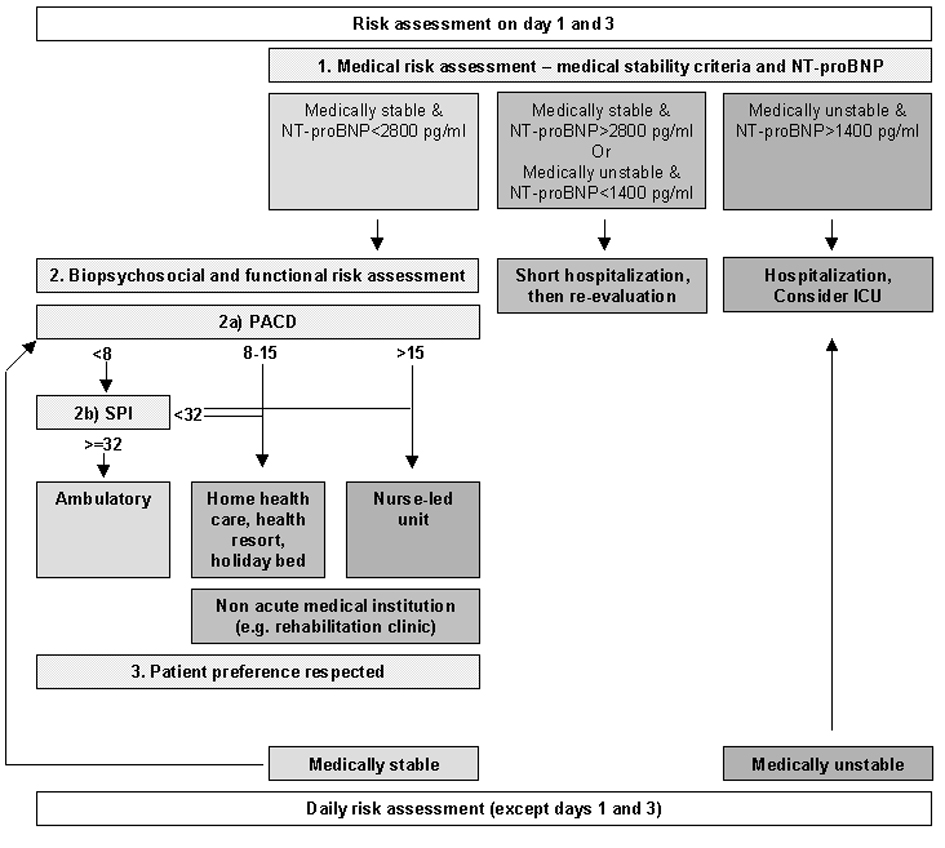|
| Demographic characteristics | (n = 75) |
|
| Mean Age (years) | 79.8 |
| Sex (male), no. (%) | 43 (57.3) |
|
| Coexisting illnesses, no. (%) | |
|
| Cerebrovascular disease | 5 (6.6) |
| Renal dysfunction | 46 (61.3) |
| Pneumopathy | 16 (21.3) |
| Malignancy | 9 (12) |
| Diabetes | 30 (40) |
| Peripheral artery disease | 9 (12) |
| Any | 71 (94.7) |
| Average count of coexisting illnesses | 3.7 |
|
| Anamnestic findings, no. (%) | |
|
| Orthopnea | 49 (65.3) |
| Paroxysmal nocturnal dyspnea | 36 (48) |
| Palpitations | 15 (20) |
| Cough | 34 (45.3) |
| Nocturia | 31 (41.3) |
| Gain of weight | 21 (28) |
| Angina pectoris | 9 (12) |
| Limited exercise capacity | 63 (84) |
| Average severity of dyspnea (NYHA) | 3.4 |
|
| Clinical findings | |
|
| Positive hepatojugular reflux (no./%) | 49 (65.3) |
| Distended neck veins (no./%) | 40 (53.3) |
| Lower extremity edema (no./%) | 51 (68) |
| Rales (no./%) | 53 (70.7) |
| Systolic blood pressure (mmHg) | 129 (111 - 146) |
| Diastolic heart pressure (mmHg) | 79 (68 - 89) |
| Heart rate (beats/min.) | 92 (75 - 109) |
| Respiratory rate (breaths/min.) | 20 (16 - 24) |
| Body temperature (°C) | 36.7 (36.3 - 37.0) |
|
| Diagnostic findings | |
|
| LVEF, if echo performed (50/75 patients) (%) | 44 (30 - 65) |
| Radiologic congestion (no./%) | 43/74 (58.1) |
| NT-proBNP (ng/L) | 14,154 (4,261 - 17,057) |
